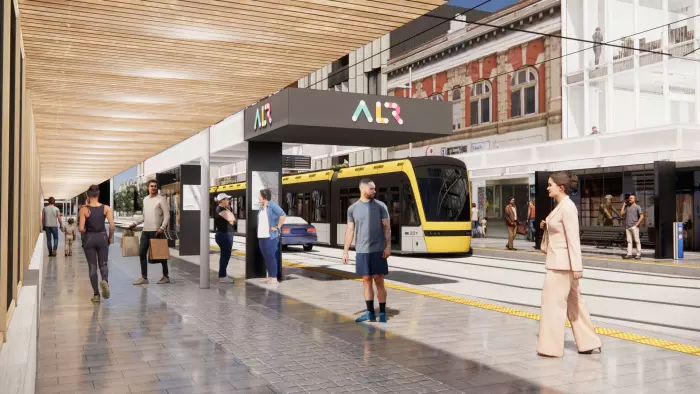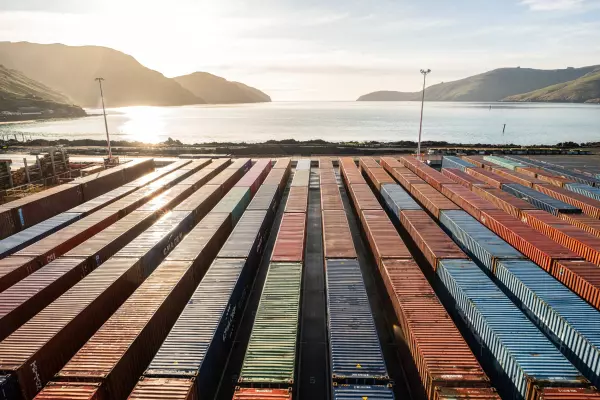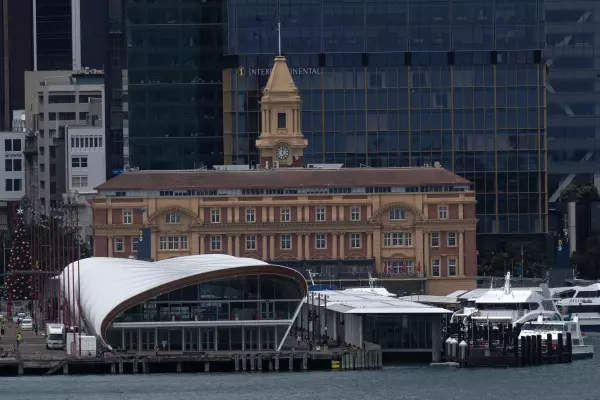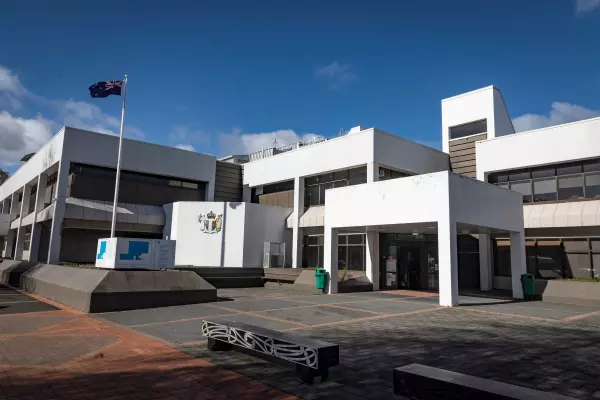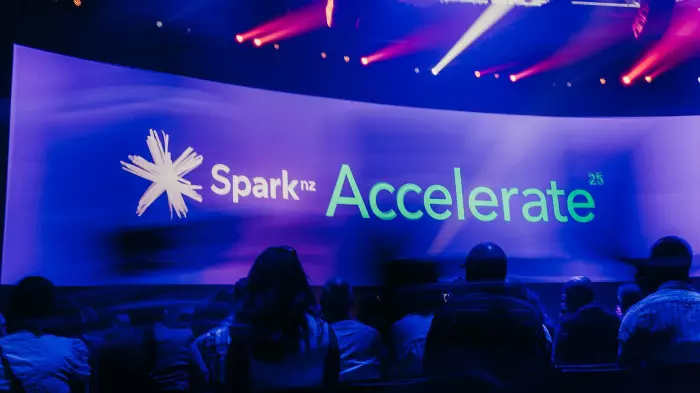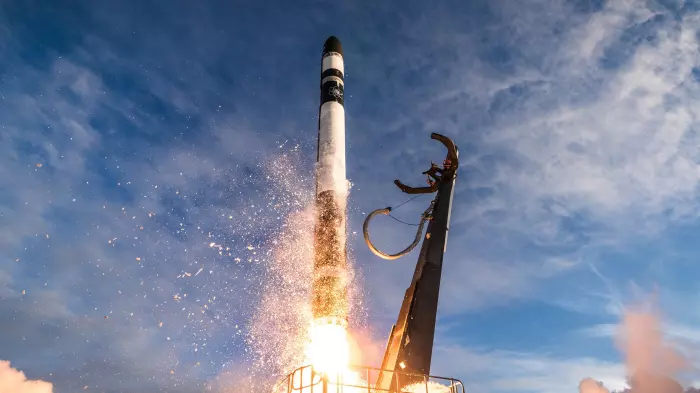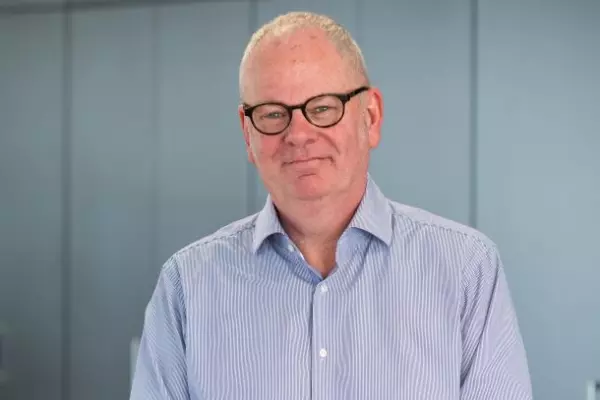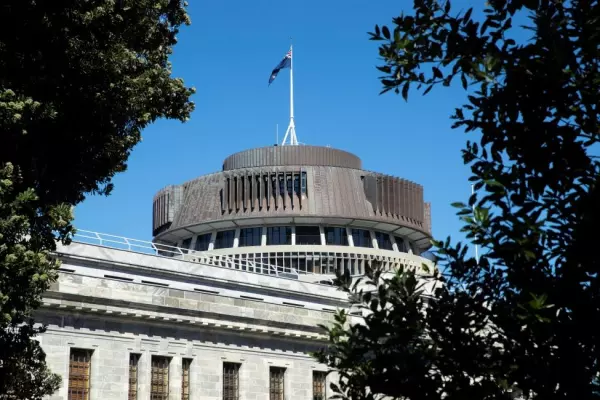For the $14.6 billion estimated cost of light rail in Auckland, other countries could deliver six, seven, or even eight times as much track.
So says Ross Copland, chief executive of the New Zealand Infrastructure Commission, Te Waihanga.
The government confirmed earlier this year it had opted for a $14.6b partially-tunnelled light rail option, running 24 kilometres from Auckland central to the airport.
Copland noted the cost is a high-level estimate, but said on a per-kilometre basis, countries like Canada, Australia and Spain could deliver roughly 190 to 200 kilometres of at-grade, or surface, network for the same spend.
France or the United States could do 140 to 150km, he said. And if NZ could match the costs of tunnelled light rail in Italy and Spain, the country could deliver a 50 to 60km network.
For major projects, the commission chief suggested NZ should identify credible international benchmarks to aim for, which would then inform the development of a delivery model to help it get value for money.
“There are many different ways to approach it, but intuitively we’d say internationally we would be getting better value for money for a similar scale of investment, so the challenge for the next stage of the business case is to really look at how we extract more value from that investment.”
NZ is among the least efficient high-income countries at delivering infrastructure, according to research published last December by the commission.
“For every dollar of capital we’re spending, we’re getting less road, less pipe, less light rail,” Copland said.
And with a huge historical and future infrastructure gap, that’s a problem.
NZ is currently spending at average or slightly above-average levels on infrastructure compared to other high-income countries, research done by the commission shows. However, decades of relative underinvestment led the commission to identify a historical infrastructure gap of $104b.
What’s up, doc?
The research published by the commission identified geography and population density as two factors that affect the efficient delivery of infrastructure, both areas where NZ faces challenges.
However, the study said countries like Chile and Switzerland had shown it was possible to overcome this with a focus on good institutions, robust decision-making processes and a credible pipeline of future infrastructure projects.
Copland said the countries that approached projects as one-offs, where there were "feast and famine" cycles of infrastructure investment, were less efficient at delivery.
Consistent investment led to standardised design, a more robust workforce, and supply chains and companies that were prepared to invest more in equipment and training their staff, leading to increased productivity.
During the interview, Copland showed BusinessDesk a slide comparing the future infrastructure pipeline in NZ versus Australian states.
States such as Queensland, Victoria and New South Wales had far greater investment intentions than NZ.
In March, the Australian federal government announced it was pumping a further A$17.9b (NZ$19.4b) towards infrastructure, bringing its 10-year pipeline to more than A$120b.
Copland said the effect of the growing Australian infrastructure pipeline would be more interstate and interregional competition for labour.
“I think our best case would be we keep the workforce we have – that would be a great outcome. Worst case would be that the wages difference grows even greater and we start to lose some of the resources that we have here in NZ, either physically or in a digital sense.”
Cost of consenting
According to another previous research paper by the commission, NZ infrastructure developers are spending about $1.29b a year getting their projects consented.
The paper suggested pre-construction costs were higher in NZ than in some comparable markets, and that the cost of consenting had increased by 70% since 2014, in large part due to the cost of engaging outside experts.
Due to what Copland called the increasingly detailed and litigious NZ planning system, developers were often required to provide more detail in the early pre-construction stages, potentially leading to costly reworks.
Overseas peers expressed surprise about planning and consenting being a barrier to development in NZ, Copland said.
“That isn’t the case in a lot of economies,” he said. “It’s not even on their radar as an issue.”
“In NZ it is such a barrier. Here we are in the middle of planning reform, and we’re seeing projects being declined resource consents right now.”
The government is in the process of replacing the Resource Management Act.
In a statement, infrastructure minister Grant Robertson said the act was being overhauled to cut complexity and costs, and better enable urban development, while also improving environmental protections.
Calls for cost inquiry
The Green party’s longstanding transport spokeswoman, Julie Anne Genter, who is returning from parental leave shortly, told BusinessDesk she wanted to see the transport and infrastructure select committee hold an inquiry into the high cost of delivering infrastructure in NZ.
“I think it would be incredibly worthwhile to have a cross-party look at the issue and try to depoliticise it and find some solutions,” she said.
Genter thought any inquiry should focus primarily on transport.
“Right now it doesn't matter what you’re building, we’re paying too much for any given kilometre of cycleway, light rail and highway, and that means we have less of the transport budget to spend on other valuable projects.”
The high cost of infrastructure in NZ relative to overseas could lead to less political will to go through with projects, Genter believed.
“I feel like there’s so many opportunities to get great outcomes through smarter infrastructure, but in the last decade I’ve seen very few examples of us being able to actually implement it, in part due to this problem, and I just see it getting worse in the future if we don’t make some big changes.”
Robertson said he was concerned NZ had struggled to build infrastructure in a timely and efficient way, but rejected the need for an inquiry.
He was focused on responding to the recommendations made by the commission in its final NZ infrastructure strategy, which was delivered to ministers in mid-March.
"The strategy includes recommendations that aim to improve our infrastructure system and get more out of the investments we do make, including a recommendation to improve infrastructure cost analysis by undertaking investigations into the cost performance of NZ’s infrastructure sector,” he said.
As for light rail, Robertson stressed the $14.6b was a high-level estimate which included an allocation for cost inflation. Treasury has suggested the upper-cost range could be as high as $29.2b.
He expected further international cost comparisons to be included in the detailed business planning stage, which will take around two years and provide a more accurate cost estimate.
Copland said the commission wanted to do further international benchmarking work, including sector-specific comparisons.
Benchmarking NZ against other Organisation for Economic Cooperation and Development (OECD) countries would allow the commission to develop a series of metrics, he said, to see whether the country was becoming more or less efficient at delivering infrastructure over time.


